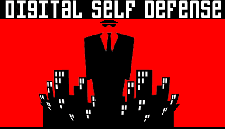
|
 |
|||
|
Black Hat USA Training 2006 |
|
Advanced Malware Deobfuscation |
||||||||
|
Jason Geffner & Scott Lambert |
||||||||
|
What to bring: |
Learn to effectively analyze malware samples that employ chunked packing, SEH injection and redirection, protected processes, API redirection, and a plethora of other anti-debugging tricks. Overview Unpacking is the process of removing the compression and obfuscation applied by a “packer” (or “protector”) to a compiled and linked binary. This class will focus on teaching attendees the steps required to effectively deal with both known and previously unknown packing techniques. This is a hands-on course. Attendees will work on real-world malware through a series of lab exercises designed to build their expertise in thwarting anti-debugging and anti-disassembling techniques. Day One The day will include a series of lab exercises focused on defeating anti-debugging tricks such as hardware/software breakpoint detection, generic/specific debugger detection, unpacker stub detection, Thread Local Storage callback functions, and more. Day Two The day will end in a contest in which attendees will pit their wits against one another to analyze a heavily armored executable. Who Should Attend What Do I Get?
|
|||||||
|
Trainer:
|
Jason Geffner is a Reverse Engineer on Microsoft Corporation's Anti-Malware Team, where his work involves analyzing malware samples, unpacking binaries, and writing tools for analysis and automation. Jason graduated from Cornell University in 2004 with a Bachelor of Science in Computer Science. He spent his summer of 2003 with Compuware Corporation where he performed full source code recovery on malware samples and penetration-tested in-house copy-protection systems via reverse engineering. During the summer of 2002, Jason worked for Pitney Bowes, where he reverse engineered software security solutions and developed process-stealthing technologies. Jason is a member of this year's Reverse Engineering Conference (REcon) Program Committee. He holds a Top Secret security clearance, and has been actively reverse engineering and analyzing software protection methods for the past nine years. Scott Lambert is a Security Program Manager on the Secure Windows Initiative (SWI) team at Microsoft. He owns enhancing the internal security tools at Microsoft, including various fuzzing tools. Leveraging his industry experience, Lambert works to ensure that SWI tools identify the vast majority of vulnerability classes. Prior to joining Microsoft, Lambert developed, maintained and supported numerous computer security applications ranging from Vulnerability Assessment and Risk Management software to Network and Host-Based Intrusion Detection/Prevention Systems for companies such as L-3 Network Security, Veridian Information Solutions, Symantec Corporation and TippingPoint, a division of 3Com. In addition, he developed and implemented test plans for the evaluation of both wired and wireless Intrusion Detection Systems and performed advanced protocol analysis in support of research and validation of various computer and network vulnerabilities and attack techniques. |
|||||||
|
Course Length: Two days. All course materials, lunch and two coffee breaks will be provided. A Certificate of Completion will be offered. You must provide your own laptop.
|
||||||||
|
(c) 1996-2007 Black Hat
|
